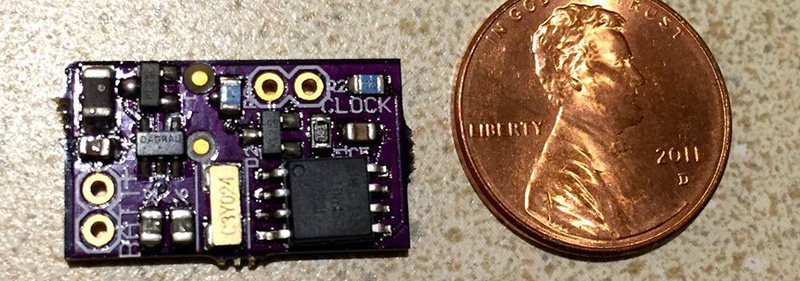There is a strange clock in the waiting room of Lord Vetinari, Patrician of Ankh-Morpork. While this clock keeps accurate time overall, the ticks and tocks are out of sync, occasionally missing a tick altogether. The net effect is one of turning one’s brain into a sort of porridge.
Yes, a Vetinari Clock has made its way into The Hackaday Prize. This isn’t a clock that’s random yet accurate over long time spans; this is a complete replacement for run-of-the-mill clock movements you can find at any craft store.
In addition to the Vetinari Clock, [Nick Sayer]’s Crazy Clock can be programmed as a sidereal clock (3m 56s fast per day), a Martian clock (39m 36s slow per day), and a tidal clock (50m 28s slow per day), as well as some ‘novelty’ modes that still have 86400 ticks per day ranging from subtle to ‘clown car’ levels of craziness.
[Nick] is gunning for the ‘best product’ category for the Hackaday Prize, and for that he’s designing a board to be a direct replacement for the board in a Quartex Q80 clock movement. With this new board, [Nick] can replace the electronics in this movement in just a few minutes. Being built around an ATtiny45 means it’s infinitely hackable. A clock with this movement would be a great product, although judging from the video below, not one we would want to be around all day.




















I need to exact revenge in my old high school. I wonder how long it’d take to replace about 1,000 clock’s mechanism? Setting it ti martian time would mess up their schedule. Especially if I leave the one clock that handle bells alone, they’d be wonder why the bell is ringing a few minutes early or late.
Does this clock work with a 28 hour day? My natural cycle is at new 28 hour, so I adhere to the 28 hour system.
I originally read your comment as 28-day cycle, implying your natural menstrual cycle.
How long should you stand starting at it before determining the battery has died?
Put a tiny camera in it that looks to see if anyone looking at it and if they are doesn’t move the hands until they stop
Best use of OpenCV ever.
Call it the Heisenclock? Observing it changes its behavior…
Now you just need a chronophage on top
http://archive.wired.com/culture/design/magazine/17-02/st_chronophage
WE need metric time. 100 hours per day with 100 minutes per hour and 100 seconds per minute.
I’m late! It’s almost 60:50!
Decimal time was done before, in China it existed for most of its history alongside with duodecimal system. In France they had decimal time during and after French Revolution. It never caught on because it’s awkward for people used to normal clocks. There is also Swatch Internet Time that divides the day into 1000 beats, each 86,4s long.
If only they would metricize time; it’d work in a spreadsheet then, without the wacky fooking around!
An affordable concentric 3-shaft 1-degree per step stepper motor. Now that would be a “best product”.
For those talking about metric time, I hope your all joking. As far as the second, it is the SI standard. There is 360 degrees in a circle, so unless you know how to make 360 turn into a multiple of 10, your sol. The reason we have the time system we do, is because its most accurate. It breaks down to 15 degrees per hour, 15/60 degrees per minute, and 15/3600 per second. Could this be improved? Yeah I think so. The Babylonians were the ones that came up with successive division of 60. We could start with 360 days a year, based on an exact 1 degree per day in our revolution, that would make things way easier. Then we could use the human body as the standard for hours. Currently its 16 hours awake, 8 hours asleep, for adults. So that’s 240 degrees awake, 120 asleep. Both are multiples of 12, and you see why 24 was chosen. But if you want base 10, we’d need a 36 hour day, 24 awake, and 12 asleep. Then break that into subdivisions, of 10. First sub-division would be .1 degrees per minute, second .01 degrees per second. Then we would have a base 10 system in time. 100 seconds to an hour, 10 minutes to an hour, but you’d break at hours, since its 36 hours to a day.
Why not use radians?
Seperate the day into 2π sub sections.
My maths lecturers always claimed radians were simpler to work with than degrees.
I’ll try in watchmaker once I’ve finshed my 13 hour face.
I always hear mathematicians talk about how math would be easier if we used a base 6 system instead of 10 and usually its followed by how glad they are that time stayed base 6 from Babylonian days. I believe this guy explains it in some detail. https://www.youtube.com/watch?v=U6xJfP7-HCc
Sorry meant to say “base 12” not “base 6”